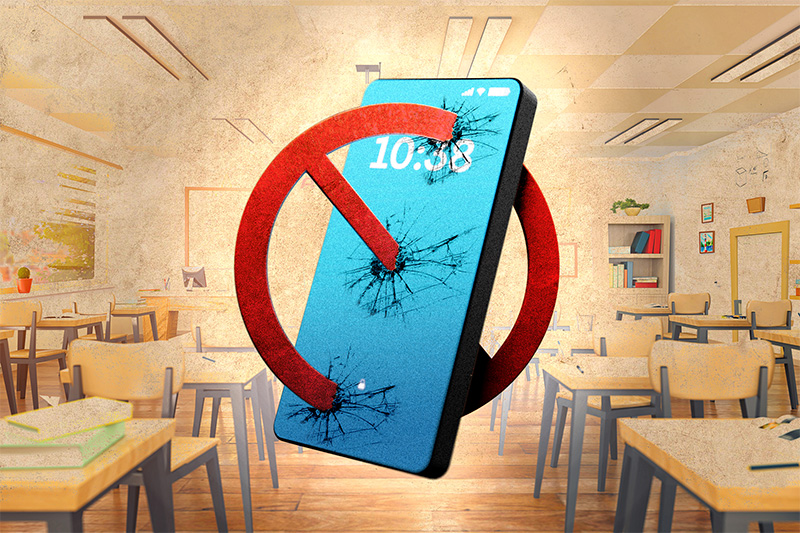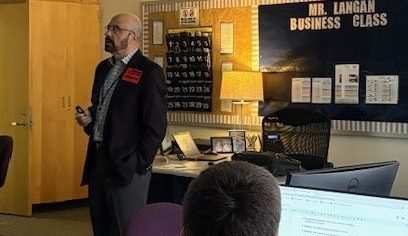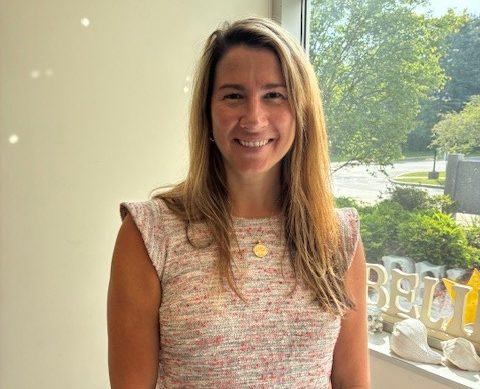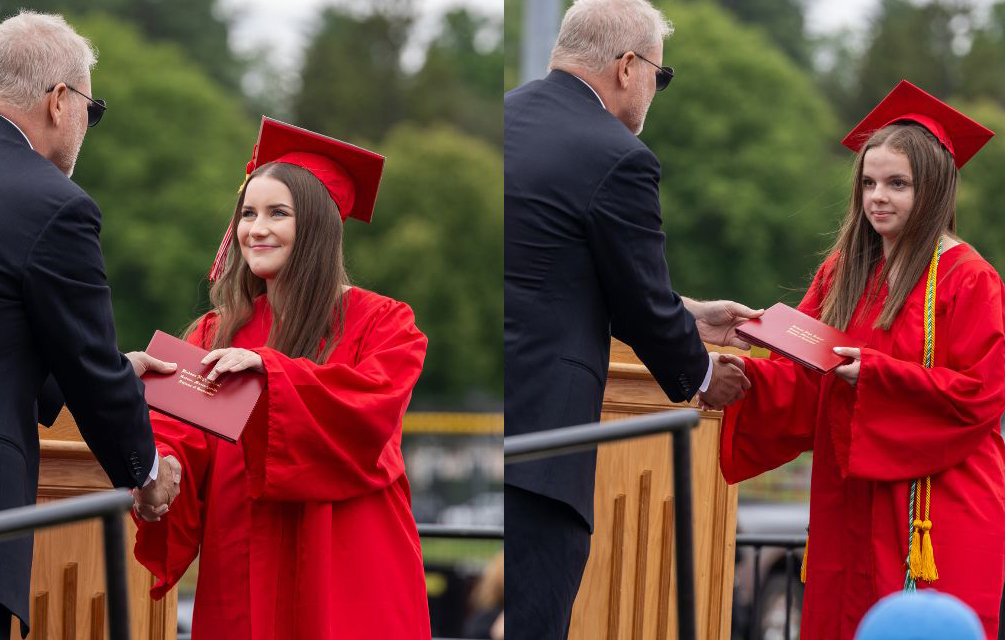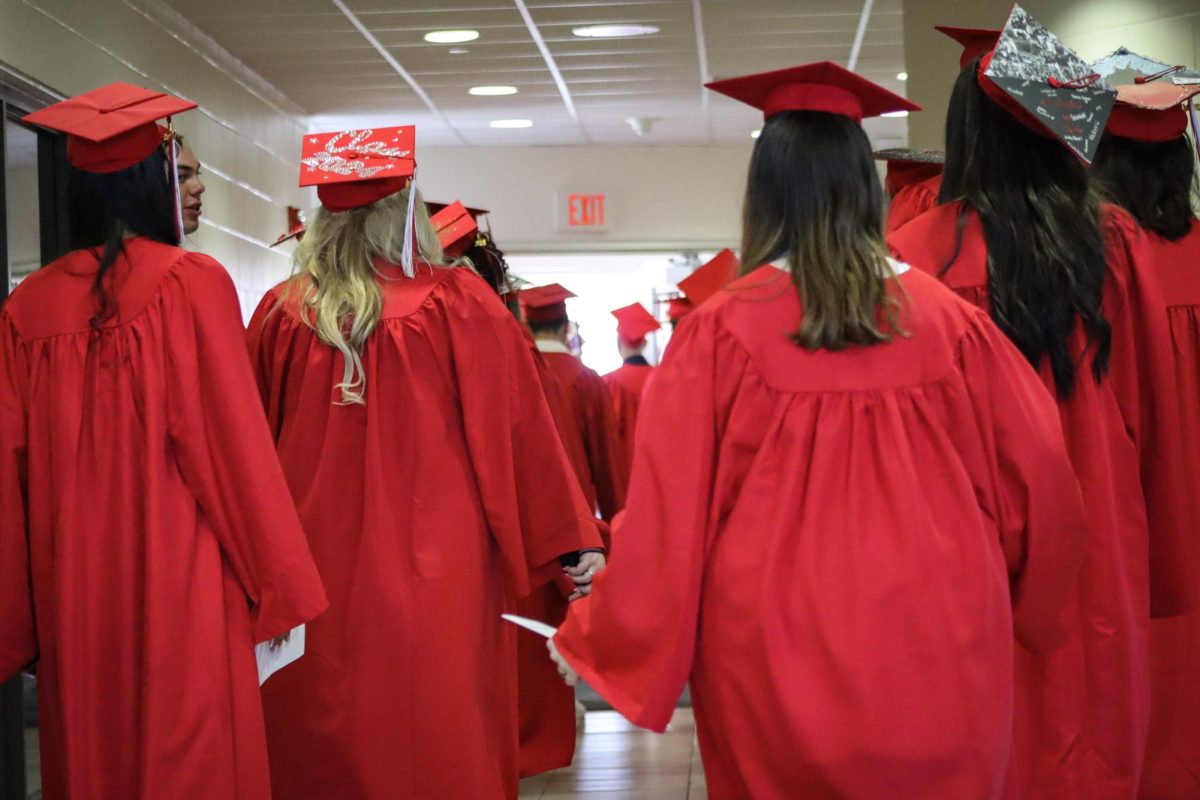By Paige Bosio
Students have been launching rockets through the hallway! No this is not a prank. Robert Van Buren’s Honors Physics class let a carbon dioxide rocket fly through the air on a fishing line on February 7. His class is also featured on the Pasco website for creating a new lab using their materials. They do this lab to find the acceleration of a real rocket. PLUS, we are the only school that does this lab!

Inside the rocket is a blue object called an accelerometer, which connects to the data studio, so it can record the acceleration of the rocket. There are two hooks on top of the rocket so the fishing line can go through. In between the part of the rocket holding it up and the container holding the accelerometer is the C02 cartridge.
The carbon dioxide rocket is hung on a fishing line which is strung through the holes of a physics stand on a table. There are two tables with stands to keep the fishing line up, so the rocket can glide on it. There are also 4 Kg weights (about 9 pounds) on each table to provide tension for the line, that way the rocket flies straight. On one end of the tables there is a computer set up that connects to a data studio, the laptop is used for calculating the velocity/acceleration/distance of the rocket.
To make the rocket go, someone had to take a C02 cartridge and puncture it with much force; then it would burst and fly down the fishing line.
The rockets results were as follows: first trial going 30 meters in 5.22 seconds, second trial was 25.46 meters in 5.75 seconds, and the third trial going 21 meters in 4.66 seconds. The acceleration was a high as 35 meters/sec squared.
“The lab went well. Until a certain device (the launcher) broke,” says David Paton, one of the students who participated in the lab.
Even though the launcher broke, it was not the only surprising part of the lab.

“The CO2 smelled like celery, ants on a log (peanut butter and raisins on a celery stick). The smell was very bothersome,” senior Jon Wharton said.
He felt that the lab was pretty easy, but “calculations and data make it more difficult though.”
Although the CO2 smelled bad, it seemed like the students had a fun time doing the lab.
